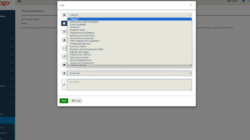The grand canyon university app is revolutionizing the way students engage with their academic journey. This innovative tool provides a seamless connection to essential resources, from course materials to campus activities, creating an integrated experience that enhances both learning and community involvement. As students navigate their higher education path, this app stands as a vital companion, offering convenience and accessibility at their fingertips.
With features designed to streamline communication, manage schedules, and support academic success, the grand canyon university app is more than just a digital platform; it’s a gateway to a fulfilling university experience. Whether it’s accessing grades or staying updated on events, the app plays a crucial role in fostering a supportive and informed student body.
In our fast-paced world, where distractions are abundant and the pressure to perform is ever-increasing, the concept of mindfulness has emerged as a beacon of hope. This practice, rooted in ancient meditation traditions, emphasizes the importance of being present in the moment, cultivating a deeper awareness of our thoughts, feelings, and surroundings. Let’s explore the depths of mindfulness, its benefits, and practical ways to incorporate it into our daily lives.
What is Mindfulness?
Mindfulness is defined as the psychological process of bringing one’s attention to experiences occurring in the present moment. This practice encourages individuals to observe their thoughts and feelings without judgment. By focusing on the here and now, mindfulness helps to reduce stress, enhance emotional regulation, and improve overall well-being. The beauty of mindfulness lies in its simplicity; it does not require special equipment or extensive training, making it accessible to everyone.
The Benefits of Mindfulness
Numerous studies have highlighted the myriad benefits of practicing mindfulness. Here are some of the most significant advantages:
- Stress Reduction: Mindfulness has been shown to significantly reduce stress levels. By fostering a non-reactive awareness of thoughts and feelings, individuals can create a buffer against the demands of daily life.
- Improved Focus: Practicing mindfulness enhances attention and concentration. By training the mind to stay present, individuals often find it easier to focus on tasks without becoming easily distracted.
- Emotional Regulation: Mindfulness helps in recognizing and managing emotions more effectively. This awareness allows individuals to respond to situations with clarity rather than reacting impulsively.
- Enhanced Relationships: Mindfulness fosters empathy and understanding. By being present in conversations, individuals can improve their communication skills and deepen their connections with others.
- Better Physical Health: Research indicates that mindfulness can lead to improved physical health outcomes, including lower blood pressure, better sleep quality, and enhanced immune function.
How to Practice Mindfulness
Incorporating mindfulness into your daily routine doesn’t have to be complicated. Here are some practical strategies to get you started:
1. Mindful Breathing
One of the simplest yet most effective ways to practice mindfulness is through mindful breathing. Set aside a few minutes each day to focus solely on your breath. Find a comfortable position, close your eyes, and take deep, deliberate breaths. Pay attention to the sensation of the air entering and leaving your body. If your mind begins to wander, gently bring your focus back to your breath.
2. Body Scan
A body scan is a meditation technique that involves paying attention to different parts of your body in a systematic way. Start from your toes and gradually move up to the crown of your head, noting any sensations, tension, or discomfort. This practice fosters a greater connection between your mind and body, helping you become more aware of physical sensations.
3. Mindful Walking
Walking can be a meditative practice when approached mindfully. During a walk, focus on the sensations of your feet touching the ground, the rhythm of your breath, and the sounds around you. Allow yourself to fully immerse in the experience, letting go of distractions and worries.
4. Mindful Eating
Eating mindfully involves savoring each bite and paying attention to the flavors and textures of your food. Rather than rushing through meals, take the time to appreciate what you’re eating. This practice not only enhances your enjoyment of food but can also promote healthier eating habits.
Overcoming Challenges in Mindfulness Practice
While the benefits of mindfulness are clear, many individuals encounter challenges when trying to establish a consistent practice. Here are some common obstacles and tips to overcome them:
1. Restlessness
It’s normal to feel restless or fidgety at first. If you find it difficult to sit still, try starting with shorter sessions and gradually increase the duration. Incorporating movement into your practice, such as mindful walking or gentle yoga, can also help.
2. Wandering Mind
It’s common for the mind to wander during mindfulness practice. Instead of judging yourself for losing focus, gently acknowledge the distraction and return your attention to your breath or the present moment. Remember, mindfulness is a skill that improves with practice.
3. Time Constraints
Many people feel they don’t have enough time to practice mindfulness. However, mindfulness can be integrated into even the busiest of schedules. Start with just a few minutes a day, and look for opportunities to practice mindfulness throughout your routine—such as during your commute or while waiting in line.
Mindfulness in Everyday Life
The ultimate goal of mindfulness is to integrate it into every aspect of our lives. Here are some tips for bringing mindfulness into your daily activities:
- Morning Routine: Begin your day with a few minutes of mindful breathing or stretching. This sets a positive tone for the day ahead.
- Technology Breaks: Take regular breaks from screens to practice mindfulness. Step outside, take a few deep breaths, and reconnect with your surroundings.
- Conversation Presence: During conversations, practice active listening by giving your full attention to the speaker. This not only enhances the interaction but also cultivates empathy.
- Gratitude Journaling: Take a moment each day to reflect on what you’re grateful for. This practice fosters a positive mindset and encourages mindfulness.
Conclusion
Mindfulness is more than just a trend; it’s a powerful tool for enhancing our well-being and navigating the complexities of modern life. By cultivating an awareness of the present moment, we can reduce stress, improve our relationships, and foster a greater sense of fulfillment. Whether through mindful breathing, body scans, or simply being present in our daily activities, the practice of mindfulness can transform our lives in remarkable ways.
So why not take a moment today to embrace the present and discover the art of mindfulness?
Top FAQs
What features are included in the grand canyon university app?
The app includes features like course management, grade tracking, event notifications, and campus resources.
Is the grand canyon university app available for all students?
Yes, the app is available to all currently enrolled students at Grand Canyon University.
Can I access the app from any device?
The app is designed to be accessible on both iOS and Android devices, allowing flexibility for users.
Is there a cost associated with using the grand canyon university app?
No, the app is free for all students of Grand Canyon University.
How do I report technical issues with the app?
Students can report technical issues through the app’s support feature or contact the university’s IT department directly.












